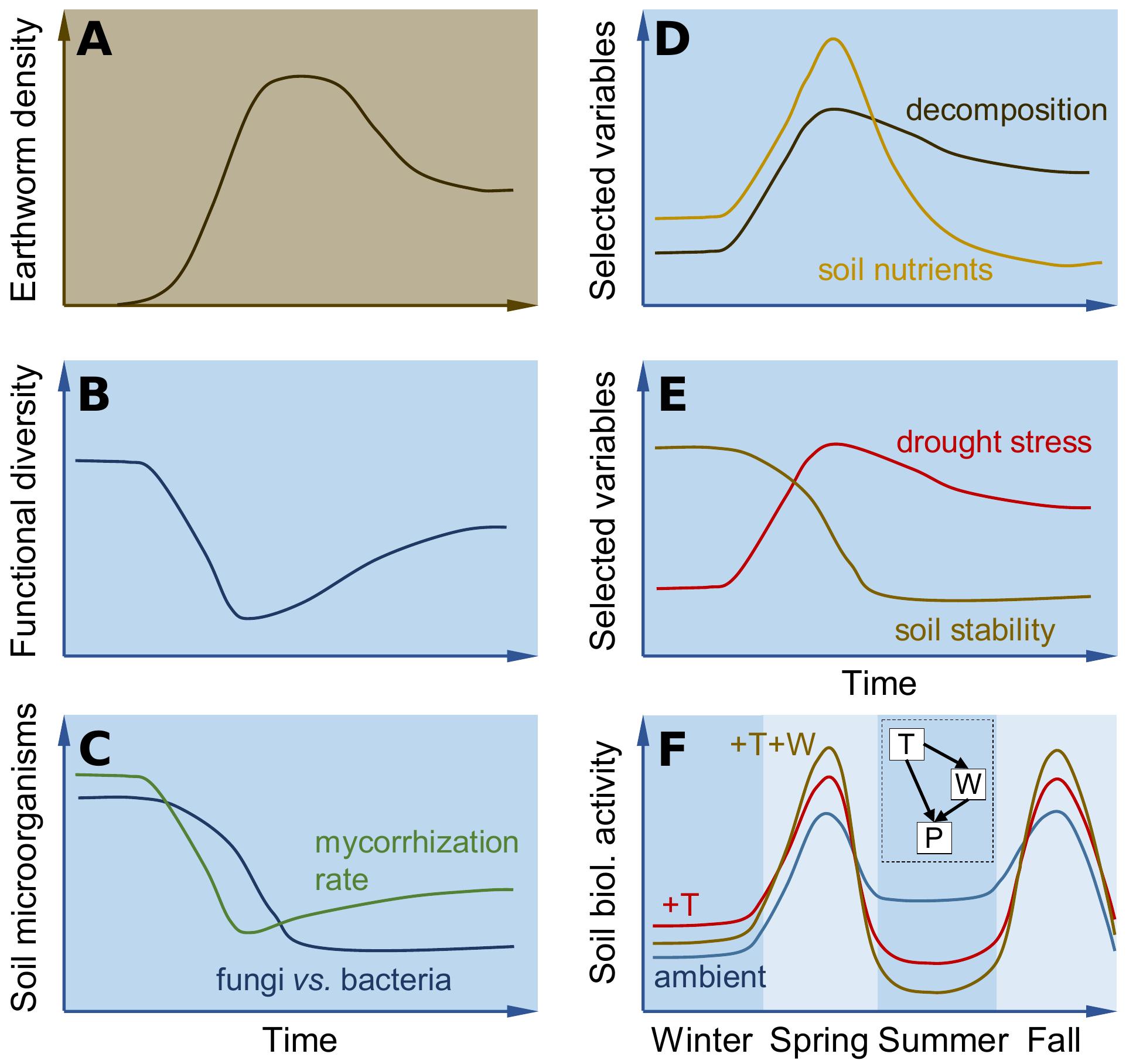
Conceptual depiction of the main hypotheses. [A] Earthworms invade ecosystems in waves (see text). Those dynamics induce nonlinear alterations of communities and processes. We expect to observe a decline in the functional diversity of plant and soil communities [B], recovering a bit after the invasion wave. We expect to see a shift in soil energy channels from a more fungal to a bacterial- dominated system with lower mycorrhization rates [C]. Further, decomposition [D] and drought stress are hypothesized to increase and soil stability to decrease [E]. Earthworms (W) and warming (T) will interact in intensifying seasonal dynamics in soil biological acitvity [F]. The inset indicates a path analysis differentiating direct effects of T on processes (P) from indirect effects through changes in W. See text for details.